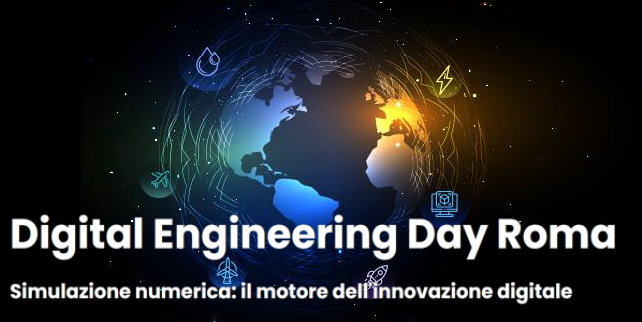Today in Rome, the Digital Engineering Day, organized by ESSS Italy, brought together researchers, engineers, and industry leaders to showcase how simulation technologies are transforming the way products are designed, tested, and optimized. The event highlighted the growing importance of digital workflows, simulation-driven design, and digital twins in accelerating innovation across multiple sectors.
Among the standout contributions was the presentation by Marco Evangelos Biancolini, Associate Professor at the University of Rome “Tor Vergata” and founder of RBF Morph, who presented Structural Optimization of Internal Combustion Engines Using RBF Mesh Morphing. His talk demonstrated both the scientific depth and the industrial relevance of applying Radial Basis Functions (RBF) to advanced engineering problems.
RBF are not only a powerful tool for mesh morphing but also a fundamental mathematical method that enables both data science applications and geometric intelligence. They allow interpolation in multidimensional spaces, supporting surrogate modeling, AI workflows, and smooth shape deformation. In the context of digital engineering, this makes RBF an essential enabler for both parameter-based and parameter-free optimization. The latter, based on the Biological Growth Method (BGM), draws inspiration from nature: just as bones and trees adapt their shape under stress, engineering components can be evolved to reduce loads, increase safety, and extend fatigue life.
The industrial case presented focused on a Piaggio four-stroke engine, where collaboration between RBF Morph, Piaggio, the University of Rome Tor Vergata, and Ansys produced tangible results. For the connecting rod, optimization under extreme load conditions led to a 17.4% stress reduction and a 21.0% mass reduction, significantly improving reliability and efficiency. For the piston, simulations under realistic boundary conditions—such as crown pressure, liner contact, and wrist-pin constraints—produced optimized geometries that reduced stresses while maintaining performance. These results demonstrate how digital workflows can deliver lighter, stronger, and more sustainable designs in a fraction of the time traditionally required.
Biancolini also emphasized the broader role of RBF in the evolution of digital engineering. Beyond internal combustion engines, RBF Mesh Morphing is now central to the development of digital twins, surrogate models for machine learning, and interactive VR implementations. By reducing turnaround times from weeks to days and enabling large-scale parametric exploration, RBF technologies are paving the way for AI-driven, simulation-based engineering. Importantly, the solutions presented are not prototypes but part of the Ansys product portfolio, fully integrated into Fluent, Mechanical, LS-DYNA, optiSLang, and Twin Builder.
The presentation at Digital Engineering Day Roma clearly illustrated how the combination of academic research, industrial collaboration, and advanced simulation tools can shape the future of product development. Through RBF Mesh Morphing, structural optimization of internal combustion engines—and many other applications—can be carried out faster, smarter, and more sustainably, bringing the vision of digital engineering closer to reality.
More info about the event here.



